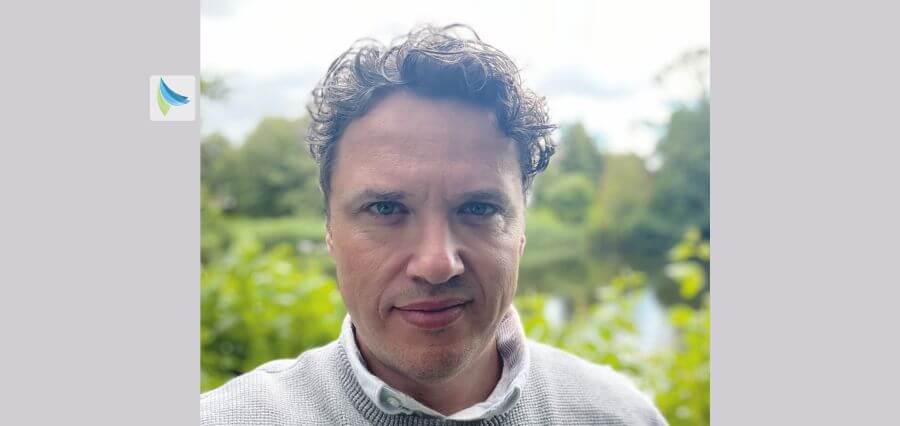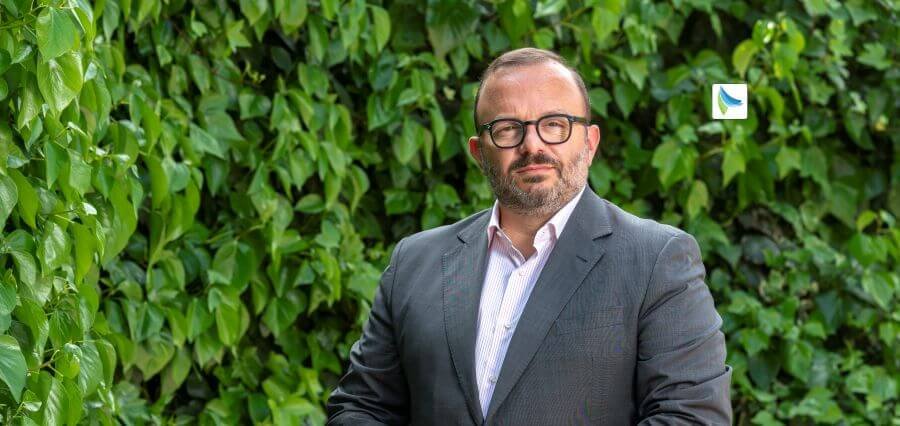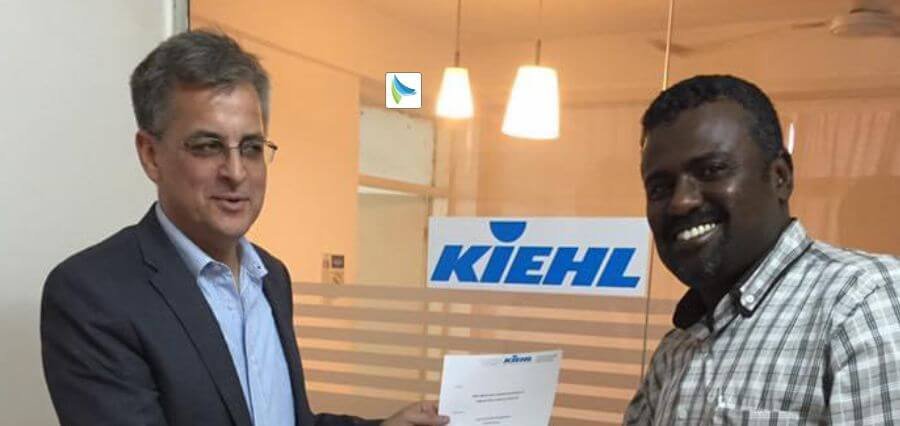The construction industry has seen remarkable advancements through the integration of digital processes, particularly with Building Information Modeling (BIM). These digital tools have revolutionized how projects are designed, managed, and executed, offering enhanced efficiency, safety, and sustainability.
The sector’s push for innovation is driven by the need to streamline workflows, reduce errors, and improve overall project outcomes. This digital transformation is crucial for addressing the growing complexity and scale of modern construction projects, making it an important area of focus for industry leaders and professionals.
Stefan Mordue, Senior Manager of Education and Partnerships at Bentley Systems has been an influential figure in this transformation. With a career deeply rooted in architecture and a strong focus on technology and information management, he has championed the adoption of BIM across various platforms.
His journey from becoming a chartered architect at 25 to earning a master’s in construction project management highlights his commitment to digital workflows in construction. His tenure with the National Building Specification (NBS) and roles at AECOM and Cohesive further underscore his expertise in implementing best practices and standards in BIM, making him a respected voice in the industry.
Currently, Stefan brings his wealth of experience to Sustainability and Education team with Bentley Systems, an infrastructure engineering software company dedicated to advancing the world’s infrastructure. He collaborates with academic institutions to equip the next generation of professionals with the necessary skills and knowledge to think critically about the built environment and creating resilient infrastructure solutions.
Bentley Systems’ commitment to removing financial barriers and promoting hands-on learning experiences demonstrates its dedication to innovation. By integrating digital twin technology and other advanced solutions, Bentley Systems is ensuring a more sustainable and efficient future for the industry.
Let’s explore Stefan’s inventive leadership journey in the Built Environment:
Historic Achievement in Fusion Research
Stefan’s career in BIM was inspired by a combination of his background in architecture and his fascination with technology and information management. Becoming a chartered architect was a significant milestone for him, but he soon realized the potential for further innovation in the construction industry through digital processes. This led him to pursue a master’s in construction project management via distance learning, where he gained valuable insights into managing construction projects and the importance of integrating digital workflows.
His time with the National Building Specification (NBS) was particularly formative. During his six years there, he delved into information management and helped organizations, big and small, implement best-practice digital workflows. This was an exciting time as the UK government had just announced its intention for a UK BIM mandate, so there was a real buzz within the industry.
During this time, he represented several standards committees as well as being the Royal Institute of British Architects (RIBA) representative on the Architects Council of Europe BIM Working Group. This gave him a real perspective on both UK and European BIM mandates and initiatives.
In 2017, he transitioned into consulting, joining AECOM as a principal digital consultant for Europe and later Cohesive as a senior consultant. These roles allowed him to work on BIM strategies for both public and private sector clients, turning his passion for technology and process into a rewarding career.
Alongside these roles, he has served as the Academic Director of the ‘Master’s in Global BIM Management’ at the Zigurat Institute of Technology, where he has been responsible for developing the curriculum. He continues to have the privilege of seeing current and past students flourish within a range of BIM careers.
Stefan has dedicated much of his career to championing efforts that make digital construction knowledge accessible and understandable, informed by his own experiences with dyslexia. Writing ‘Building Information Modeling for Dummies’ as part of the world’s best-selling reference series with co-authors David Philp and Paul Swaddle was a significant achievement, bringing BIM into the mainstream and making it accessible to a wider audience. The book has even been translated into French: BIM Pour Les Nuls!
Promoting Innovation in Digital Construction
Today, Stefan is the Senior Program Manager for Education and Partnerships at Bentley Systems, an infrastructure engineering software company dedicated to advancing the world’s infrastructure. His role involves working with universities, colleges, and schools to nurture the next generation of infrastructure professionals by equipping them with the tools and knowledge needed to succeed in the field.
Bentley Systems has made significant investments to remove financial barriers, providing access to software and learning experiences at no cost for academic use. Stefan also collaborates with a variety of industries, government, and university partners to host competitions and challenges that allow students to apply their skills to real-world scenarios, encouraging innovation and practical problem-solving. This hands-on approach helps students understand the real-world applications of BIM and nurtures a culture of innovation and excellence in digital construction.
Groundbreaking Results in Nuclear Fusion
In his role, Stefan is working with universities to create ‘smart digital campuses,’ employing digital twin technology as a foundational element of smart cities. A team of academics at Kaunas University of Technology (KTU) in Lithuania, have partnered with Bentley Education to design and implement a live digital twin that calculates the CO2 footprint of the KTU campus using Bentley’s iTwin Capture and iTwin Experience platform.
Similarly, Dublin City University (DCU) has deployed Bentley iTwin Experience as part of their technology stack to create a digital twin to enhance the campus experience for students and staff, particularly supporting individuals with autism. This immersive digital twin helps guide users with avatars, provides real-time sound level data, and avoids noisy and crowded areas, promoting a neurodiverse-friendly campus experience.
Simplifying Digital Construction
Despite the best efforts of individuals throughout the industry, too many people are killed and injured in construction each year. That’s why Stefan’s real interest lies in how digital tools and processes, coupled with change management, can make a significant difference. He firmly believes that digital construction is as much about behavioral change as it is a technological one.
People talk about BIM for efficiency gains and increased productivity, but Stefan considers how it can be used to make a safer and more attractive industry. This will be key to enticing the next generation of talent into construction. Stefan began to promote BIM and digital for Health and Safety back in 2013, when very little was written or researched about the topic area.
Together with his co-author Roland Finch, they wrote the award-winning ‘BIM for Construction Health and Safety’ (RIBA Publications), which celebrated its 10th anniversary this year. In 2016, Stefan was privileged to be acknowledged by winning an ‘International Outstanding Achievement Award’ from the CIOB for his work to deliver practical solutions to incorporate health and safety into the BIM environment.
The journey into digital construction can be a daunting one. New technologies, processes, and a change of mindset can feel overwhelming. Stefan has always aimed to champion digital construction in a clear, jargon-free manner and continues to look for ways that he can contribute to the aims of making digital construction more accessible, understandable, and open to diverse people globally.
For example, as the lead author of resources like the ‘NBS BIM Object Standard’ and the ‘Periodic Table of BIM’ to simplify complex terms, this playful take on the periodic table of elements became a global success, fostering discussion and debate. Sharing information in an analog way may seem like a contradiction when promoting ‘digital.’ However, he believes that sometimes it is the best method to reach the intended audience.
Driving BIM Adoption through Innovative Solutions
Collaboration and partnerships are crucial to Stefan’s work. They bring together diverse expertise and perspectives, enhancing the quality and impact of BIM and Digital Twin initiatives. By working with academic institutions, industry organizations, and technology partners, he can create comprehensive and innovative solutions that drive the adoption and advancement of BIM.
These collaborations also help in standardizing practices and ensuring interoperability, which are essential for the successful implementation of BIM projects. Keith Bentley, co-founder of Bentley Systems, has always advocated for openness and an agnostic approach to software. The ability to integrate with various data sources is crucial for the long-term viability and effectiveness of BIM and digital twins.
Bentley’s vision is that future engineering and design tools should be natively integrated with digital twins, moving away from traditional desktop applications to more connected, service-oriented platforms. This shift allows for continuous data flow, better decision-making processes across the lifecycle of projects, and better collaboration.
Advancements in Energy Production
In Stefan’s opinion, utilizing BIM as the foundation for a Digital twin truly unlocks new value and will accelerate infrastructure that is data-informed, sustainable, and resilient. The addition of Artificial Intelligence (AI) and Machine Learning (ML) to the equation makes the opportunities and benefits extremely exciting. Using these frameworks enables and necessitates that quality data is the cornerstone of making sound and accurate decisions, irrespective of individual processes or tools. As the industry progresses towards generative design and AI, it will encounter new risks, potential misunderstandings, and potential disputes that will need to be addressed as new laws and legal practices evolve.
The Power of Mentorship in the BIM Industry
As a founding member of the CIC BIM 2050 group, Stefan has always been fascinated by future-gazing and the impact of digital transformation on construction. Many in-demand jobs today was not even around 5 or 10 years ago. With the advent of AI and technology development, he believes the industry and required skills will look very different in the future. He encourages everyone to embrace innovation and be open to adopting new technologies and evolving standards.
Stefan’s key advice to aspiring leaders who want to make a mark in the BIM industry is to seek out a mentor—someone they can talk to and bounce ideas around with. He has been fortunate to have had key people who have shaped his career and provided invaluable advice.
A personal highlight for him was being able to give back by mentoring others, which led to receiving the ‘Generation for Change—Mentor of the Year’ in 2019 and ‘Digital Construction Champion 2022’ for supporting the next generation of construction professionals in digital construction.
By cultivating a spirit of collaboration, staying curious, and continuously learning, Stefan believes that aspiring leaders can make a significant impact in the BIM industry.


















